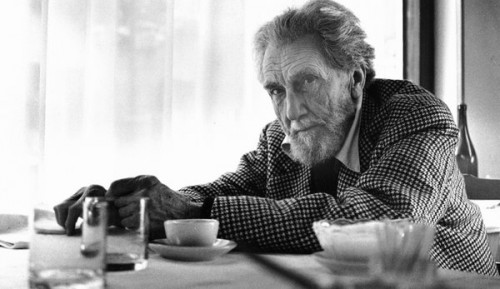
Translated by Greg Johnson
Before getting to the quick of the subject, I would like to make three preliminary remarks:
I hesitated to accept your invitation to speak on the figure of the dandy, for this sort of issue is not my main subject of interest.
I finally accepted because I rediscovered a magisterial and lucid essay by Otto Mann, published many years ago in Germany: “Dandyism as Conservative Lifestyle” (“Dandysmus als konservative Lebensform”). This essay deserves to be republished, with commentaries.
My third remark is methodological and definitional. Before speaking of the “dandy,” and relating the subject to the excellent work of Otto Mann, I must set forth the different definitions of the “dandy.” These definitions are for the most part erroneous, or superficial and insufficient.
Some define the dandy as “a pure phenomenon of fashion,” as an elegant personage, nothing more, concerned only to dress himself in the latest style. Others define him as a superficial personage who loves the good life and wanders idly from cabaret to cabaret. Françoise Dolto has painted a psychological portrait of the dandy. Still others emphasize almost exclusively the homosexual dimension of certain dandies like Oscar Wilde. Less commonly, the dandy is assimilated to a sort of avatar of Don Juan, who filled his emptiness by racking up female conquests. These definitions are not those of Otto Mann, which I have adopted.
The Archetype: George Bryan Brummell
Following Otto Mann, I hold that the dandy has a far deeper cultural significance than superficial Epicureans, hedonists, homosexuals, Don Juans, and fashion victims. For Otto Mann, the model, the archetype of the dandy remains George Bryan Brummell, a figure of the early 19th century, which he opposed.
Brummell, contrary to certain later pseudo-dandies, was a discrete man, who did not seek to draw attention to himself by vestimentary or behavioral eccentricities. Brummell avoided loud colors, did not wear jewels, was not devoted to purely artificial social games. Brummell was distant, serious, dignified; he did not try to make an impression, as did later figures as varied as Oscar Wilde, Stefan George, or Henry de Montherlant. For him, spiritual tendencies predominate. Brummell engaged society, conversed, told stories, using irony and even mockery. To speak like Nietzsche or Heidegger, we could say that he rose above the “human, too human” or quotidian banality (Alltäglichkeit).
Brummell, a first generation dandy, incarnates a cultural form, a way of being, that our contemporary society should accept as valid, indeed as solely valid, but that it can no longer generate, or generate sufficiently. Which is why the dandy opposes our society. The principal reasons that underlie his opposition are the following: (1) society appears as superficial and marked with inadequacies and insufficiencies; (2) the dandy, as a cultural form, as the incarnation of a manner of being, poses as superior to this inadequate and mediocre society; (3) the Brummellian dandy does nothing exaggerated or scandalous (sexually, for example), does not commit crimes, does not have political commitments (contrary to the dandies of the second generation like Lord Byron). Brummell himself could not maintain this attitude to the end of his days, because he was crippled by debts and died in poverty in a hospice in Caen. At a certain point, he had turned his back on the fragile equilibrium required by the initial posture of the dandy, of which he was the first incarnation.
An Ideal of Culture, Balance, & Excellence
If the dandy’s behavior and way of being contain no exaggeration, no flamboyant originality, then why does he appear important, or merely interesting, to us at all? Because he incarnates an ideal, which is to some extent, mutatis-mutandis, the same as Greek paiedeia or Roman humanitas. In Evola and Jünger, there is nostalgia for Latin magnanimitas, for the hochmuote of the Germanic knights of the 12th and 13th centuries, Roman or medieval avatars of a Persian proto-historical model, first advanced by Gobineau then by Henry Corbin. The dandy is the incarnation of this ideal of culture, balance, and excellence during one of the most trivial periods in history, where the crude, calculating bourgeois and the rowdy militant of the Hébertist or Jacobin sort took the place of the aristocrat, the knight, the monk, and the peasant.
At the end of the 18th century, with the French Revolution, these virtues, rising from the oldest proto-historical depths of European humanity, were completely called into question. First by the ideology of the Enlightenment and its corrolary, militant egalitarianism, which would erase all the visible and invisible traces of this ideal of excellence. Then, by the Sturm und Drang and Romanticism, which, by way of reaction, sometimes tilted toward ineffectual sentimentalism, which is also an expression of disequilibrium. The immemorial models, sometimes blurred and diffuse, the surviving archetypal attitudes . . . disappear.
The English first became aware of it, at the end of the 17th century, even before the upheavals of the 18th: Addison and Steele in the columns of the Spectator and the Tatler noted the urgent necessity of preserving and maintaining a system of education, a general culture able to guarantee the autonomy of man. A value that the current media do not promote, quiet proof that we have indeed fallen into an Orwellien world, which dons the mask of the “good democratic apostle,” inoffensive and “tolerant,” but pitilessly hounds down all residues of autonomy in the world today. In their successive articles, Addison and Steele bequeathed us an implicit vision of the cultural and intellectual history of Europe.
 The Ideal of Goethe
The Ideal of Goethe
The highest cultural ideal Europe has ever known is of course ancient Greek paideia. It had been reduced to naught by primitive Christianity, but, from the 14th century on, one sees throughout Europe a desire for ancient ideals to be reborn. The dandy, and, long before his emergence on the European cultural scene, the two English journalists Steele and Addison, wished to incarnate this nostalgia for paideia, in which the autonomy of each individual is respected. In fact, they try to concretely realize in society Goethe’s objective: to incite their contemporaries to forge and fashion a personality, which will be moderate in its needs, satisfied with little, but above all capable, through this quiet asceticism, of reaching the universal, of being a model for all, without betraying its original humanity (Ausbildung seiner selbst zur universalen und selbstgenugsamen Persönlichkeit).
This Goethean ideal, shared avant la lettre by the two English publicists then incarnated by Brummell, was not unscathed by the vicissitudes of the French Revolution, the industrial revolution, and the assorted scientific revolutions. Under the blows of modernity’s contempt for the Ancient, Europe found itself devoid of any substantial culture, any ethical backbone. The consequences are fully apparent today in the decline of education.
From 1789 throughout the 19th century, the cultural level steadily collapsed. Cultural decline started at the top of the social pyramid, henceforth occupied by the triumphant bourgeoisie which, contrary to the dominant classes of former times, has no moral (sittlich) base capable of maintaining a high level of civilization; it has no religious base, nor any real professional ethic, unlike the craftsmen and tradesmen once supervised by their guilds or corporations (Zünfte). The sole aim of the bourgeoisie is the contemptible accumulation of cash, which allows us to speak, following René Guénon, of a “reign of quantity” in which all quality is banished.
In the disadvantaged classes at the bottom of the social ladder, any element of culture is eradicated quite simply because the pseudo-elites no longer uphold a cultural standard; the people, alienated, insecure, proletarianized, are no longer a matrix of specific enthnically determined values, much less a matrix capable of generating an active counter-culture that could easily nullify what Thomas Carlyle called the “cash-flow mentality.” In short, we are witnessing the rise of an affluent barbarism (eine ökonomisch gehobene Barbarei), economically advanced and culturally void.
One cannot be rich in the bourgeois style and also refined and intelligent. This is obviously true: nobody cultivated wants to find himself at dinner, or in conversation, with billionaires like Bill Gates or Albert Frère, nor with bankers or manufacturers of automobiles or refrigerators. The true man of culture, who would be lost in the presence of such dismal characters, would continually have to repress yawns at their inept chatter. (Those of a more volcanic temperament would have to repress the desire to rub a pie in the fat faces of these nullities.) The world would be purer—and surely more beautiful—without such creatures.
The Mission of the Artist According to Baudelaire
For the dandy, it is necessary to reinject aesthetics into this barbarism. In England, John Ruskin (1819–1899), the Pre-Raphaelites with Dante Gabriel Rossetti and William Morris, went to work. Ruskin elaborated architectural projects to embellish the cities made ugly by the anarchic industrialization of the Manchesterian era. Specifially, this led to the construction of “garden cities.” Henry van de Velde and Victor Horta, Belgian and German Art Nouveau or Jugendstil architects, took up this torch. But all the while, in spite of these concrete achievements—for architecture more easily allows concrete realization—the gulf between the artist and society never ceased growing. The dandy is like the artist.
In France, Baudelaire, in his theoretical writings, sets the artist up as the new “aristocrat,” whose attitude must be stamped with distant coldness, whose feelings should neither be excited nor irritated beyond measure, whose principal quality must be irony, along with the ability to tell pleasant anecdotes. The artistic dandy takes a distance from all the conventional hobby-horses of society.
Baudelaire’s views are summarized in the words of a character of Ernst Jünger’s novel Heliopolis: “I became a dandy, who makes the unimportant important, who smiles at the important” (“Ich wurde zum Dandy, der das Unwichtige wichtig nahm, das Wichtige belächelte”). Baudelaire’s dandy, following the example of Brummell, is thus not a scandalous and sulfurous character like Oscar Wilde, but a cold observer (or, to paraphrase Raymond Aron, a “disengaged spectator”), who sees the world as a mere theatre, often insipid, where characters without real substance move about and gesticulate. The Baudelairian dandy has a bit of a taste for provocation, but it remains confined, in most cases, by irony. These later exaggerations, often mistaken for expressions of dandyism, do not correspond to the attitudes of Brummell, Baudelaire, or Jünger.
Thus Stefan George, in spite of the great interest of his poetic work, pushes aestheticism to the point of self-parody. For George, it is a small price to pay in an era when the “loss of every happy medium” becomes the rule. (Hans Sedlmayr explained this loss of the “happy medium” quite clearly in a famous book on contemporary art, Verlust der Mitte.) Sedlmayr clarifies this urge to seek the “piquant.” George found it in the revival of classical Greece.
Oscar Wilde ultimately put only himself on stage, proclaiming himself “aesthetic reformer.” Art, from his point of view, is nothing more than a space of contestation destined ultimately to absorb all social reality, becoming the only true reality. The economic, social, and political spheres are devalued; Wilde denies them all substantiality, reality, concreteness. If Brummell retained an entirely sober taste, if he kept his head on his shoulders, Oscar Wilde posed from the start as a demigod, wore extravagant clothing, with loud colors, a bit like the Incroyables and the Merveilleuses of the French Revolution. A provocateur, he also started a negative process of “feminization/ devirilisation,” walking through the streets with flowers in his hand. One can regard it as a precursor of today’s “gay pride” parades. His poses are pure theatre, far removed from Brummell’s tranquil feeling of superiority, of virile dignity, of “nil admirari.”

Oscar Wilde, 1854–1900
Self-Satisfaction & the Expansion of the “Ego”
For Otto Mann, this quotation from Wilde is emblematic:
The gods had given me almost everything. I had genius, a distinguished name, high social position, brilliancy, intellectual daring: I made art a philosophy, and philosophy an art: I altered the minds of men and the colours of things: there was nothing I said or did that did not make people wonder: I took the drama, the most objective form known to art, and made it as personal a mode of expression as the lyric or the sonnet, at the same time that I widened its range and enriched its characterisation: drama, novel, poem in rhyme, poem in prose, subtle or fantastic dialogue, whatever I touched I made beautiful in a new mode of beauty: to truth itself I gave what is false no less than what is true as its rightful province, and showed that the false and the true are merely forms of intellectual existence. I treated Art as the supreme reality, and life as a mere mode of fiction: I awoke the imagination of my century so that it created myth and legend around me: I summed up all systems in a phrase, and all existence in an epigram. Along with these things I had things that were different. (De Profundis)
The patent self-satisfaction, the expansion of the “ego,” reach the point of mystification.
These exaggerations kept growing, even in the orbit of the stoic virility dear to Montherlant. He too strikes exaggerated poses: as practitioner of an extremely ostentatious bullfighting, being photographed wearing the mask of a Roman Emperor, etc. Lesser followers risk falling into flashy “lookism” and bad taste, formalizing to the extreme the attitudes or postures of the poet or the writer. In any case, they are not a solution to the phenomenon of decadence.
As regards dandyism, the only way out is to return calmly to Brummell himself, before he sank under financial vexations. Because this return to Brummell is equivalent, if one remembers the earlier exhortations of Addison and Steele, to a more modern—more civil and perhaps more trivial—form of paideia or humanitas. But, trivial or not, these values would be still be maintained, would continue to exist and shape minds.
This mix of good sense and the dandy aesthetic would make it possible to pursue a practical political objective: to defend the school in the classical sense of the term, to increase its power to transmit the legacy of Hellenic and Roman antiquity, to envisage a new and effective pedagogy, which would mix the idealism of Schiller, traditional methods, and the methods inspired by Pestalozzi.

Pierre Drieu la Rochelle, 1893–1945
Return to Religion or “Unhappy Consciousness”?
The figure of the dandy must thus be put back in the context of the 18th century, when the ideals and classical models of traditional Europe were being battered and destroyed under the butcher’s blows of leveling modernity. The substance of religion—whether Christian or pre-Christian under Christian varnish—becomes hollow and exhausted. The Moderns take the place of the Ancients. This process led inevitably to an existential crisis throughout European civilization.
Two paths are available to those who try to escape this sad destiny: (1) The return to religion or tradition, important paths that are not our topic today, to the extent that it represents an extremely vast continent of thought, deserving a complete seminar to itself. (2) To cultivate what the Romantics called Weltschmerz, the pain caused by a disenchanted world, which amounts to assuming an attitude of permanent critique toward the manifestations of modernity, developing an unhappy consciousness that generates a self-marginalizing culture where the political spirit can formulate an opposition to the mainstream.
For the dandy and the Romantic who oscillate between the return to religion and the feeling of Weltschmerz, the latter is most deeply felt. In the interiority of the poet or the artist this feeling will mature, grow, develop. To the point of becoming immune to the power of the unhappy consciousness to cause both languid and violent emotions. In the end, the dandy must become a cold and impartial observer in control of his feelings and emotions. If his blood boils at “economic horrors” it must quickly cool, leading to impassiveness, if he is to be able to face them effectively. The dandy who underwent this process thus reached a double impassibility: nothing external can shake him any longer; but neither can any interior emotion.
Pierre Drieu La Rochelle was never able to arrive at such a balance, which gives a very peculiar and seductive note to his work, quite simply because it reveals this process underway, with all its eddies, calms, and advances. Drieu suffers from the world, is tested on the front lines, is seduced by the discipline and “metallic” aspects of “immense and red” Fascism, on the march in his time, mentally accepts the same discipline in the Communists and Stalinists, but never really becomes a “cold and impartial observer” (Benjamin Constant). The work of Drieu La Rochelle is justly immortal because it reveals this permanent tension, this fear to falling into the ruts of a barren emotion, this joy at seeing vigorous alternatives to modern torpor, like Fascism or the satire of Doriot.

Ernst Jünger, 1895–1998
Strengthening Mind & Character
In short, the deconstruction of the ideas of ancient paideia and the deliquescence of immemorial religious substantialities beginning at the end of the 18th century, is equivalent to an existential crisis throughout all Western countries. The response of intelligence to this crisis is double: either it calls for a return to religion or it causes a deeply rooted pain in the depths of the soul, the famous Weltschmerz of the Romantics.
Weltschmerz is felt in the deepest interiority of the man who faces this crisis, but it is also in his interiority that he works silently to rise above this pain, to make it the material from which he forges the answer and alternative to this terrible loss of substantiality that is presided over by a deleterious economicism. It is thus necessary to harden the mind and character against the pangs entailed by the loss of substantiality without inventing out of whole cloth a rather lame substitute for what has been lost.
Baudelaire and Wilde think, each in his own way, that art will offer an alternative to the old substantialities that is almost identical in all ways but more flexible and moving. But in this case, art need not be understood as simple aestheticism. The toughening of the mind and character must serve to combat the ambient economicism, to fight against those who incarnate it, accept it, and puts their energies in its service. This toughness must be used as the firm moral and psychological base of the ideals of political and metapolitical struggle.
This toughness must be the carapace of what Evola called the “differentiated man,” he who “rides the tiger,” who wanders, unperturbed and imperturbable, “among the ruins,” the one Jünger called the “Anarch.” “The differentiated man who rides the tiger among the ruins” or the “Anarch” are described as impartial, impassive observers. These tough, differentiated men rise above two kinds of obstacles: external obstacles and those generated from their own interiority. That is to say, the impediments posed by inferior men and the weaknesses of a soul in distress.
Chandala Figures of Decadence
The existential crisis that began around the middle of the 18th century led to nihilism, quite judiciously defined by Nietzsche as an “exhaustion of life,” as a “devaluation of the highest values,” which is often expressed by a frantic agitation and the inability to really enjoy leisure, an agitation that accelerates the process of exhaustion.
The abstraction of existence is the clear indication that our “societies” no longer constitute “bodies” but, as Nietzsche says, mere “conglomerates of Chandalas,” in whom nervous and psychological maladies accumulate, a sign that the defensive power of strong natures is no more than a memory. It is precisely this “defensive power” that the “differentiated” man must—at the end of his search for traditional mysteries—reconstitute in himself.
Nietzsche very clearly enumerates the vices of the Chandala, the emblematic figure of European decadence, resulting from the existential crisis and nihilism: the Chandala suffers various pathologies: an increase in criminality, generalized celibacy and voluntary sterility, hysteria, constant weakening of the will, alcoholism (and various drug addictions as well), systematic doubt, a methodical and relentless destruction of any residue of strength.
Among the Chandala figures of decadence and nihilism, Nietzsche includes those he calls “official nomads” (Staatsnomaden), who are civil servants without real fatherlands, servants of the “cold monster,” with abstract minds that, consequently, generate always more abstractions, whose parasitic existence generates, by their appalling but persistent sluggishness, the decline of families, in a environment made of contradictory and crumbling diversities, where one finds the “discipline” (Züchtung) of characters to serve the abstractions of the cold monster—a generalized lubricity in the form of irritability and as the expression of an insatiable and compensatory need for stimuli and excitations—neuroses of all types—political “presentism” (Augenblickdienerei) in which long memory, deep perspectives, or a natural and instinctive sense for the right no longer prevail—pathological sensitiveness—barren doubts proceeding of a morbid fear of the unyielding forces that made and will still make history/power—a fear of mastering reality, of seizing the tangible things of this world.

Victor Segalen, 1878–1919
Victor Segalen in Oceania, Ernst Jünger in Africa
In this complex of frigidity, of agitated opposition to change, barren frenzies, and neuroses, one primary response to nihilism is to exalt and concretize the principle of adventure, in which the protester will leave the bourgeois world, with its tissue of artifices, moving towards virgin spaces that are intact, authentic, open, mysterious.
Gauguin left for the Pacific Islands.
Victor Segalen, in his turn, praises primordial Oceania and imperial China perishing under the blows of the Westernization. Segalen remains Breton, according to what he calls the “return to the ancestral marrow,” denounces the invasion of Tahiti by the “American romantics,” these “filthy parasites,” writes an “Essay on Exoticism” and “An Aesthetics of the Different.” The rejection of bits and pieces without much of a past cost Segalen an unjustified ostracism in his fatherland. From our point of view, he is an author worth rediscovering.
The young Jünger, still in adolescence, dreamed of Africa, the continent of elephants and other fabulous creatures, where spaces and landscapes are not ravaged by industrialization, where nature and indigenous people preserved a formidable purity, where everything was still possible. The young Jünger joined the French Foreign Legion to realize this dream, to be able to land on this new continent, glutted with mysteries and vitality.
The year 1914 gave him, and his whole generation, a chance to abandon an enervating existence. In the same vein, Drieu La Rochelle spoke of the élan of Charleroi. And later, Malraux, of “Royal roads.”
On the “left” (in so far as this political distinction has any meaning), one instead speaks of “engagement.” This enthusiasm was especially apparent at the time of the Spanish Civil War, where Hemingway, Orwell, Koestler, and Simone Weil joined the Republicans, and Roy Campbell the Nationalists, who were also lauded by Robert Brasillach.
The adventure and engagement, in the uniform of a soldier of the phalangist militia, in the ranks of the international brigades or the partisans, are perceived as antidotes to the hyperformalism of a colorless civilian life. “I was tired of civilian life, therefore I joined the IRA,” goes the Irish nationalist song, which, in its particular context, proclaims, with a jaunty tune, this great existentialist uprising of the early 20th century with all the ease, vivacity, rhythm, and humor of Green Éire.
 Intoxication? Drugs? Amoralism?
Intoxication? Drugs? Amoralism?
But if political or military commitment fulfills the spiritual needs of those those who are bored by the unrelieved formalism of civilian life without traditional balance, the rejection of all formalism can lead to other less positive attitudes. The dandy, who departs from the balanced pose of Brummell or the delicately crafted criticism of Baudelaire, will want to experience ever new excitations, merely for the sterile pleasure of trying them.
Drugs, drug-addiction, the excessive consumption of alcohol constitute possible escapes: the romantic figure created by Huysmans, Des Esseintes, fled to liquor. Thomas De Quincey evoked “The Opiumeaters.” Baudelaire himself tried opium and hashish.
Falling into drug-addiction is explained by the closing of the world, after the colonization of Africa and other virgin territories; real, dangerous adventure is no longer possible there. War, tested by Jünger around the same time as “drugs and intoxications,” lost its attraction because the figure of the warrior becomes an anachronism as wars are excessively professionalized, mechanized, and technologized.
Amorality and anti-moralism are more dead-ends. Oscar Wilde frequented sleazy bars, ostentatiously flaunting his homosexuality. His character Dorian Gray becomes a criminal in order to press his transgressions ever further, with a pitiful sort of hubris. One might also recall Montherlant’s painful end and keep in mind his dubious heritage, continued to this day by his executor, Gabriel Matzneff, whose literary style is certainly quite brilliant but in whose wake the saddest scenarios unfold, carried on in secret, in closed circles, all the more perverse and ridiculous since the sexual revolutuion of the 1960s also allows enjoyment without petty moralism of many strong pleasures.
These drugs, transgressions, and sex-crazed buffooneries, are just so many existential traps and cul-de-sacs where unfortunates ruin themselves in search of their “spiritual needs.” They wish to “transgress,” but this, to the ironical observer, is nothing more than a sad sign of wasted lives, the absence of real vitality, and sexual frustrations due to defects or physical infirmities. Certainly, one cannot “ride the tiger”—indeed it would be hard to find one—in the salons where the old fop Matzneff lets drop tidbits of his sexual encounters to his creepy little admirers.

Frithjof Schuon, 1907–1998
Religious Asceticism
The true alternative to the bourgeois world of “little jobs” and “petty calculations” mocked by Hannah Arendt, in a world now closed, where adventures and discoveries are henceforth nothing but repetitions, where war is “high tech” and no longer chivalrous, lies in religious asceticism, in a certain return to the monarchism of meditation, in the return to Tradition (Evola, Guénon, Schuon). Drieu La Rochelle evokes this path in his “Journal,” after his political disappointments, and gives an account of his reading of Guénon.
The Schuon brothers are exemplary in this context: Frithjof joined the Foreign Legion, surveyed the Sahara, made the acquaintance of the Sufis and the marabouts of the desert and the Atlas Mountains, adhered to an Isamized Sufi mysticism, then went to the Sioux Indian reservations in the United States, and left a stunning and astounding body of pictorial work.
His brother, named “Father Galle,” surveyed the Indian reservations of North America, translated the Gospels into the Sioux language, withdrew to a Trappist monastery in Walloonia, where he trained young horses Indian-style, met Hergé, and became friends with him.
Their lives prove that adventure and total escape from the artificial and corrupting world of the Westernization (Zinoviev) remains possible and fruitful.
For the rebellion is legitimate, if one does not fall into the traps.
Contribution to the “SYNERGON-Deutschland” seminar, Lower Saxony, May 6, 2001.
http://www.voxnr.com/cc/dt_autres/EEukZAVyyutLZaTvmX.shtml
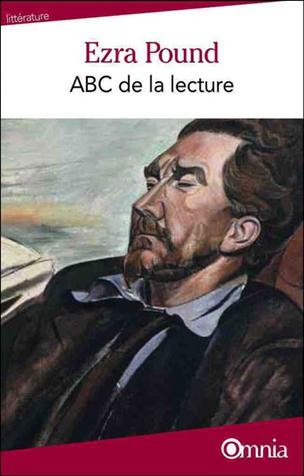 Impresa ardua insegnare a qualcuno come leggerla, ma Pound è grande non solo per le sue opere maggiori, ma per l’incessante, ingenua volontà di regalare aiuto a tutti coloro che ne facciano richiesta. Il suo intento è quello di «offrire un manuale leggibile, tanto per diletto come per profitto, a chi non frequenta più le scuole, a chi non è mai stato a scuola, o infine a quanti ai tempi della loro istruzione hanno dovuto soffrire quello che hanno sofferto molti della mia generazione».
Impresa ardua insegnare a qualcuno come leggerla, ma Pound è grande non solo per le sue opere maggiori, ma per l’incessante, ingenua volontà di regalare aiuto a tutti coloro che ne facciano richiesta. Il suo intento è quello di «offrire un manuale leggibile, tanto per diletto come per profitto, a chi non frequenta più le scuole, a chi non è mai stato a scuola, o infine a quanti ai tempi della loro istruzione hanno dovuto soffrire quello che hanno sofferto molti della mia generazione».



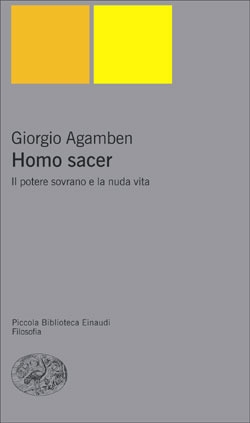 Vous aurez peut-être remarqué que tous les idiots de France et de Navarre, et Dieu sait comme ils sont nombreux, nous répètent en boucle que, demain, rien ne sera plus jamais comme avant, alors bien évidemment que, demain, ce sera encore pire qu’hier : plus de pollution, plus de consommation, plus de saccage, puisqu’il faudra en somme reprendre, en mettant les bouchées doubles, là où cette regrettable pandémie nous a stoppés net. Au rebours de ces pseudo-analyses, c’est la société occidentale techno-marchande dans son ensemble qui depuis bien des lustres est passée en mode de confinement, et même qu’elle est résolument, de plus en plus implacablement confinée. Pour le dire sur les brisées de Carl Schmitt commenté par Giorgio Agamben, l’état d’exception est devenu la norme : flicage à tous les niveaux, dans les rues et sur les autoroutes virtuelles, prépondérance des discours des « sachants » au détriment des « apprenants » voire des ignorants que nous sommes tous plus ou moins devenus, démonstration quotidienne bien que décomplexée et même parfaitement méprisante de l’incompétence criminelle de nos gouvernements et relais étatiques, individus infantilisés par l’obligation de respecter protocoles sanitaires et gestes barrières, dématérialisation accentuée, triomphe de la novlangue managériale étendue à toutes les sphères de la société et, d’abord, au monde de la santé au sens le plus large, pandémie de la non-parole journalistique s’alimentant de ses propres discours bien davantage que de la réalité, etc..
Vous aurez peut-être remarqué que tous les idiots de France et de Navarre, et Dieu sait comme ils sont nombreux, nous répètent en boucle que, demain, rien ne sera plus jamais comme avant, alors bien évidemment que, demain, ce sera encore pire qu’hier : plus de pollution, plus de consommation, plus de saccage, puisqu’il faudra en somme reprendre, en mettant les bouchées doubles, là où cette regrettable pandémie nous a stoppés net. Au rebours de ces pseudo-analyses, c’est la société occidentale techno-marchande dans son ensemble qui depuis bien des lustres est passée en mode de confinement, et même qu’elle est résolument, de plus en plus implacablement confinée. Pour le dire sur les brisées de Carl Schmitt commenté par Giorgio Agamben, l’état d’exception est devenu la norme : flicage à tous les niveaux, dans les rues et sur les autoroutes virtuelles, prépondérance des discours des « sachants » au détriment des « apprenants » voire des ignorants que nous sommes tous plus ou moins devenus, démonstration quotidienne bien que décomplexée et même parfaitement méprisante de l’incompétence criminelle de nos gouvernements et relais étatiques, individus infantilisés par l’obligation de respecter protocoles sanitaires et gestes barrières, dématérialisation accentuée, triomphe de la novlangue managériale étendue à toutes les sphères de la société et, d’abord, au monde de la santé au sens le plus large, pandémie de la non-parole journalistique s’alimentant de ses propres discours bien davantage que de la réalité, etc..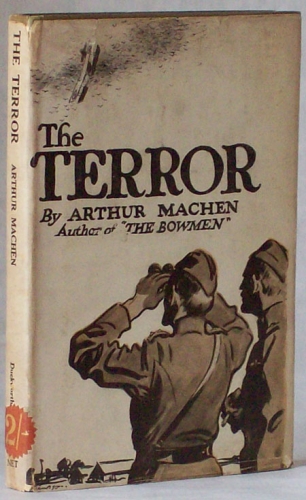 Non, la période dite de confinement n’a rien de vraiment très original, avouons-le même si, comme je l’ai dit, elle a pu faire figure, aussi étrange que fragile, d’un courte, trop courte parenthèse ayant ralenti l’avancée inexorable de la Machine, et permettre à la nature, durant un battement de sa paupière en plexiglass, de se rappeler à notre bon souvenir, sans l’aspect tragique et vengeur qu’illustre Arthur Machen dans une remarquable nouvelle intitulée La Terreur.
Non, la période dite de confinement n’a rien de vraiment très original, avouons-le même si, comme je l’ai dit, elle a pu faire figure, aussi étrange que fragile, d’un courte, trop courte parenthèse ayant ralenti l’avancée inexorable de la Machine, et permettre à la nature, durant un battement de sa paupière en plexiglass, de se rappeler à notre bon souvenir, sans l’aspect tragique et vengeur qu’illustre Arthur Machen dans une remarquable nouvelle intitulée La Terreur.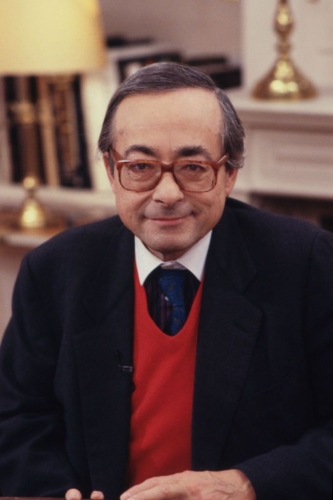
 Roberto Bolaño n’a eu de cesse de s’interroger sur cette question aussi fameuse que délicate, répondant de multiples façons dans presque chacune de ses œuvres, jusqu’à l’œuvre au noir que fut 2666. Résumons l’ensemble de ces réponses apportées par le biais d’ingénieuses figurations littéraires du Mal en affirmant que, pour le grand écrivain chilien comme pour d’autres romanciers, la plus grande œuvre d’art jamais ne saurait se bâtir sur des pleurs et des grincements de dents, encore moins sur du sang.
Roberto Bolaño n’a eu de cesse de s’interroger sur cette question aussi fameuse que délicate, répondant de multiples façons dans presque chacune de ses œuvres, jusqu’à l’œuvre au noir que fut 2666. Résumons l’ensemble de ces réponses apportées par le biais d’ingénieuses figurations littéraires du Mal en affirmant que, pour le grand écrivain chilien comme pour d’autres romanciers, la plus grande œuvre d’art jamais ne saurait se bâtir sur des pleurs et des grincements de dents, encore moins sur du sang.
 del.icio.us
del.icio.us
 Digg
Digg